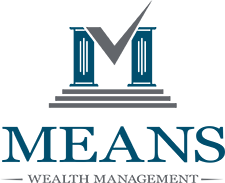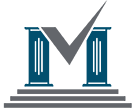SECURE Act 2.0 – What Employers Need to Know
On December 29, 2022, Congress passed the Consolidated Appropriations Act, also known as the SECURE Act 2.0 (the 2.0 Act), which includes several changes that impact employers, employees, and workplace retirement plans in general. The 2.0 Act includes at least 90 changes to retirement plans, so we thought it would be useful to summarize below, by effective date, the changes we currently see as having the greatest impact.
Effective Immediately (2023)
Retirement Plan Tax Credits for Small Employers
In 2019, the original SECURE Act increased the retirement plan startup credit available to employers with no more than 100 employees, that adopted a new retirement plan. The credit provided through the original SECURE act was equal to 50% of the plan’s administrative costs, up to an annual cap of $5,000, and could be claimed for up to 3 years. Under the SECURE Act 2.0, the 50% credit is increased to 100% for employers who do not have more than 50 employees, but is still subject to the $5,000 annual cap. The full 100% credit is phased out for employers with 51-100 employees.
Under the 2.0 Act, there is also an additional credit for plan contributions made by these same small employers to a new plan. This credit is equal to the percentage of the amount contributed by the employer, up to $1,000 per employee. The maximum credit available to employers under this program is $50,000, and employees who earn more than $100,000 in wages are exempt from this credit. This credit then phases out for employers with 51 to 100 employees.
De Minimis Incentives
Before the 2.0 Act, employers were not allowed to offer incentives or other benefits to employees to encourage them to contribute to a retirement plan. Now, under the 2.0 Act, employers can offer “de minimis financial incentives” to employees. These incentives cannot be paid for with plan assets.
We expect the IRS to provide additional guidance regarding the definition of “de minimis,” and recommend employers wait for this guidance before offering any gift card financial incentives to employees.
Roth Employer Contributions
Under the 2.0 Act, employers may now amend their retirement plans to allow employees to receive their employer matching and non-elective contribution on a Roth (after-tax) basis. These contributions, if elected as Roth, must be 100 percent vested when contributed.
SEP and SIMPLE Roth Contributions
Participants with SIMPLE or SEP retirement plans can now elect to have their contributions and/or employer contributions treated as Roth (after-tax) contributions. Prior to 2023, both SEP and SIMPLE contributions must have been made pre-tax.
Small Employer Retirement Plan Eligibility Credit for Military Spouses
The 2.0 Act encourages employers to make military spouses eligible for and/or vested sooner in their employer’s retirement plan. This credit applies to employers with less than 100 employees who make non-highly compensated military spouses eligible to participate in their retirement plan within 2 months of hire. The spouse must also be immediately eligible to receive matching or non-elective contributions and must be 100% vested immediately in all employer contributions.
The maximum credit is $500 per military spouse ($200 per spouse, plus a credit for 100% of employer contributions up to $300) and applies to the first 3 years the spouse participates.
The employer may rely on the employee’s certification that their spouse is a member of the uniformed services.
Solo 401k Creation and Contributions
Under the 2.0 Act, a sole proprietor or sole owner may establish a new 401(k) plan after the end of the taxable year, but before the employer’s tax filing date, and treat the plan as having been established on the last day of the taxable year. These plans can also be funded up to the employer’s tax filing date.
Expansion of Employee Plans Compliance Resolution System
The expansion of the EPCRS (Employee Plans Compliance Resolution System) will allow more errors to be corrected internally by plan sponsors and administrators through self-correction, will apply to inadvertent IRA errors, and will exempt certain RMD failures from the excise tax penalty. This change will also allow plan loan errors, which is a frequent area for errors, to be corrected through self-correction.
Effective in 2024
Roth Catch-Up Contributions
All catch-up contributions made by employees with compensation above $145,000 must be made on an after-tax (Roth) basis, starting in 2024. Employees with compensation below $145,000 will still be able to make their catch-up contributions on a pre-tax basis if they choose. Employers should review their retirement plan documents with their third-party administrator to ensure they are in compliance with this, and any other relevant, change set forth in the 2.0 Act.
Roth 401(k) and 403(b) RMDs
Prior to the 2.0 Act, Roth IRA owners could choose not to take RMDs, but Roth 401(k) owners were required to take pre-death distributions. With the 2.0 Act, this has changed, and Roth 401(k) owners will be free of mandatory distributions (RMDs) in 2024. This change essentially brings Roth 401(k) and 403(b) accounts into parity with their IRA cousins.
Emergency Withdrawals
Prior to the 2.0 Act, most withdrawals from retirement accounts before age 59 ½ were subject to a 10% penalty, plus taxes, regardless of the reason. The 2.0 Act will allow participants to take one emergency expense withdrawal per year, up to a maximum of $1,000. If an emergency expense is taken within the last three years and not repaid, the unpaid withdrawal will limit future emergency withdrawals. To take an emergency withdrawal, an employee must provide a written certification that they are facing a qualifying emergency expense.
Student Loan Employer Match
Employers will be permitted to make matching contributions to a 403(b) or 401(k) based on student loan payments that an employee has made. Employers will be able to view the employee’s loan payments as employee contributions to the company retirement plan for matching purposes. These matching contributions will be counted for nondiscrimination testing purposes.
Automatic Portability and Mandatory Cash-Out
Currently, employers may transfer retirement account balances held by former employees from their retirement plan to an IRA if the balance is between $1,000 and $5,000. The 2.0 Act will raise this mandatory threshold from $5,000 to $7,000. In addition to raising the limit, employers may now be permitted to automatically send a former employee’s vested retirement balance to the employee’s new employer’s retirement plan without any action from the employee.
Emergency Savings Account
Retirement plans will have the option to offer employees a linked “emergency savings account.” Non-highly compensated employees may make after-tax Roth contributions to a savings account housed within their retirement plan. The employee must have access to take a distribution from this account at least once a month. These withdrawals will be penalty-free and do not require specific documentation.
Employers can automatically enroll employees into these savings accounts but must allow them to opt out. The maximum automatic contribution an employer can enroll employees at is 3% of the employees’ wages.
The maximum balance that an employee can hold in these accounts is $2,500 or less, depending on the employer’s choice.
Employee contributions to this new “savings account” must be eligible for matching contributions that would apply to other elective plan deferrals. The employer match is not made to the savings account, but to the retirement plan.
If an employee terminates, the emergency savings account can be converted to a Roth account in the plan or can be distributed to the employee.
Retirement Lost and Found
The Department of Labor has been directed to create a searchable database of retirement accounts where participants can search to locate previous workplace plans. Plan administrators must share information with the Department of Labor to be included in the database. The DOL has been instructed to create this system “by 2024,” so this system could come sooner.
Starter 401(k) Plans
An employer who does not currently offer a retirement plan can now offer a “starter 401(k)” plan or safe-harbor 403(b) plan. Generally, this plan requires all employees be enrolled by default at 3% to 15% of compensation. The limit on contributions to this plan are the same as current IRA contribution limits.
SIMPLE to 401k Mid-Year
Previously, employers were only allowed to have one type of workplace retirement plan per calendar year. The 2.0 Act allows employers with a SIMPLE IRA plan to transition to a 401(k) mid-year if the new plan has mandatory employer contributions. The 2-Year SIMPLE IRA rollover rule also does not apply in this case.
Effective in 2025
Expanded Employee Eligibility
Before the original SECURE Act, workplace retirement plans could elect to have restrictive eligibility requirements of one year and 1,000 hours of service. This would have, essentially, excluded part-time employees who did not meet this threshold. The SECURE Act changed this to require part-time employees who have completed at least 500 hours of service in “each of 3 consecutive years” be eligible to participate in a 401(k). These employees would not necessarily be granted an employer match though.
The 2.0 Act reduces this 3-year requirement to 2 years and requires 403(b) plans that are subject to ERISA be covered.
Automatic Enrollment and Automatic Increases
The 2.0 Act will require new plans established after the date the 2.0 Act was enacted to automatically enroll their employees in the plan. These automatically enrolled employees must be enrolled at no less than 3% of their eligible compensation, and no more than 10%. In addition, these employees will automatically have their contributions increased by 1% per year until the employee reaches at least 10%, but not more than 15%.
Businesses with less than 11 employees, businesses formed within the last 3 years, church plans and governmental plans will be exempt from these requirements.
Higher Catch-Up Contributions
Individuals ages 60 through 63 will be able to make increased catch-up contributions to their workplace retirement plan (401(k) or similar); this amount will be $10,000 or 150% of the age 50+ catch-up amount indexed for inflation, whichever is greater. After 2025, the increased amounts will be indexed for inflation.
Paper Statements
Unless an employee specifically elects otherwise, plan administrators must provide a paper benefit statement to the employee at least annually.
LTC Premiums
Retirement plans will be able to distribute up to $2,500 (indexed) per year for the payment of premiums for certain long-term-care insurance premiums. Distributions for these premiums from a retirement plan will be exempt from the 10% tax on early distributions.
Effective in 2026 or Later
Savers Match
In 2027, lower wage earners will be eligible to receive a federal matching contribution of up to $2,000 a year that would be deposited into their retirement account. This contribution will equal 50 percent of the employee’s IRA or retirement plan contributions, up to the maximum amount, and will phase out as the taxpayer’s income increases. This will replace the current Saver’s Credit.
The IRS and Department of Labor have been tasked to clarify and provide more detailed rulings on many of the above-noted changes, which will be key as individuals determine how these changes will impact them and their business(es). We will continue to monitor these changes and provide updates as they are relevant. We encourage you to reach out to us if you have any questions on the above, or any other, provisions of the 2.0 Act.


